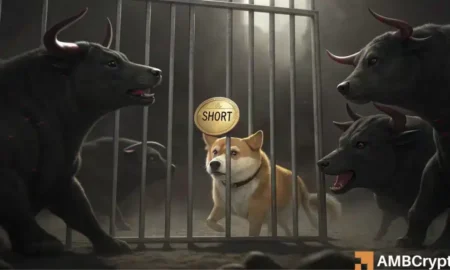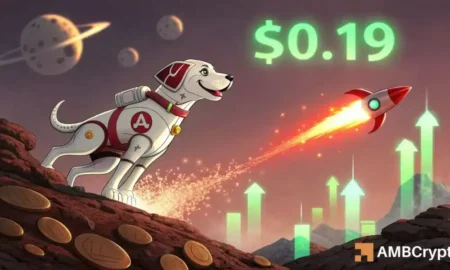Polkadot: A Cautionary Tale in the Cryptocurrency Market
The cryptocurrency market has seen remarkable growth and increasing acceptance over recent years, yet Polkadot (DOT) charts a distinctly troubling trajectory. Despite an impressive $500 million fundraising effort, Polkadot finds itself struggling to retain long-term users or developers. As of this writing, DOT’s market performance tells a worrying story—plummeting 96% from its November 2021 high of nearly $55—and stirring significant debate about the network’s future viability.
The Rise and Stall: Polkadot’s Initial Promise
Polkadot launched with high expectations, driven by a bold vision to surpass Ethereum as the primary choice for developers looking to create decentralized applications (dApps). The initiative aimed to streamline blockchain interoperability while supporting a diverse ecosystem of "parachains." Unfortunately, after the initial thrill of its launch, network usage stalled dramatically. Daily active users across major chains dwindled to around 5,000 by 2025, an alarming indicator of faltering interest. Developer engagement also suffered a severe drop, falling from approximately 2,400 to just 1,000.
Fading Capital and Declining Trading Volumes
As Polkadot’s user engagement plummeted, so too did its capital inflow; fresh investment stopped while existing investors began to exit. Trading volume for DOT dropped sharply from $39 billion to merely $5 billion, emphasizing a significant decline in on-chain activity. The lack of active participation directly impacted revenue, which fell to a mere $462 for a period, leading to concerns about Polkadot’s status as a key player in the cryptocurrency landscape. Its market cap dominance dwindled to just 0.15%, signaling a sharp decline into irrelevance as investors shifted their focus elsewhere.
The Current Landscape: A Shift in Market Confidence
In stark contrast to Polkadot’s struggles, numerous other cryptocurrencies have exhibited robust growth, raising red flags among investors regarding DOT’s long-term viability. Reports suggest that Polkadot is operating under increasingly unfavorable conditions, with analysts warning that additional downtrends could be on the horizon. Presently, DOT sits at a price point of $3.3, down by 26.8% in the last month and 47.1% over the year, making its future looks uncertain at best.
Bearish Signals: The Risk of Further Declines
As it stands, various indicators suggest that DOT is dangerously close to oversold territory. Analysts note that should sellers continue to dominate the market, DOT is at risk of slipping to crucial support levels at $3.0 and possibly as low as $2.8. Market sentiment appears bearish, as ongoing selling pressure poses severe risks to Polkadot’s survival. The cautionary rhetoric surrounding DOT has even led some experts to declare it “dead,” reflecting a general pessimism that looms over Polkadot’s prospects.
Potential Pathways: Can Polkadot Revive Its Momentum?
While the current outlook is grim, a turnaround for DOT is not entirely out of reach. Should market conditions shift and buying interest resurface, DOT could aim for a potential rebound towards the $3.6 resistance level. However, failing to hold above the $2.6 mark could solidify the notion that Polkadot is ultimately a "dead chain." For such a revival to occur, renewed confidence from investors and developers would be essential. Without a clear pathway for improvement, Polkadot risks remaining mired in its difficulties.
Conclusion: A Lesson in Market Dynamics
Polkadot’s turbulent journey offers important insights into the cryptocurrency landscape. Although it began with great promise and a significant investment, a lack of long-term user and developer engagement has led to a situation where its viability is now seriously questioned. As the cryptocurrency market continues to evolve, the future of Polkadot hangs in the balance, serving as a cautionary tale for investors and developers alike. Whether it can reclaim its position or fade further into obscurity remains to be seen, emphasizing the unpredictable nature of blockchain technology and digital assets in today’s rapidly shifting market.

















